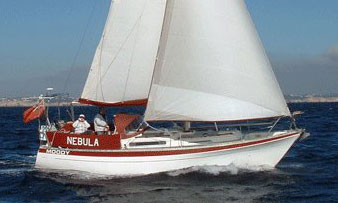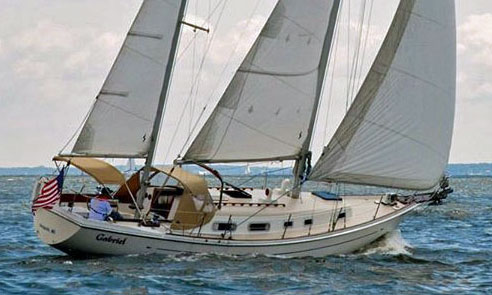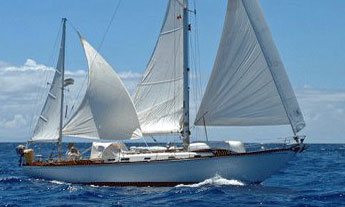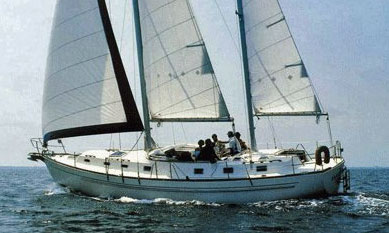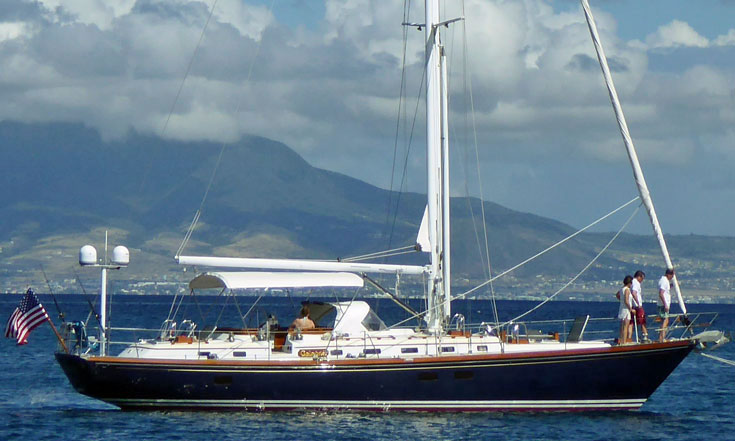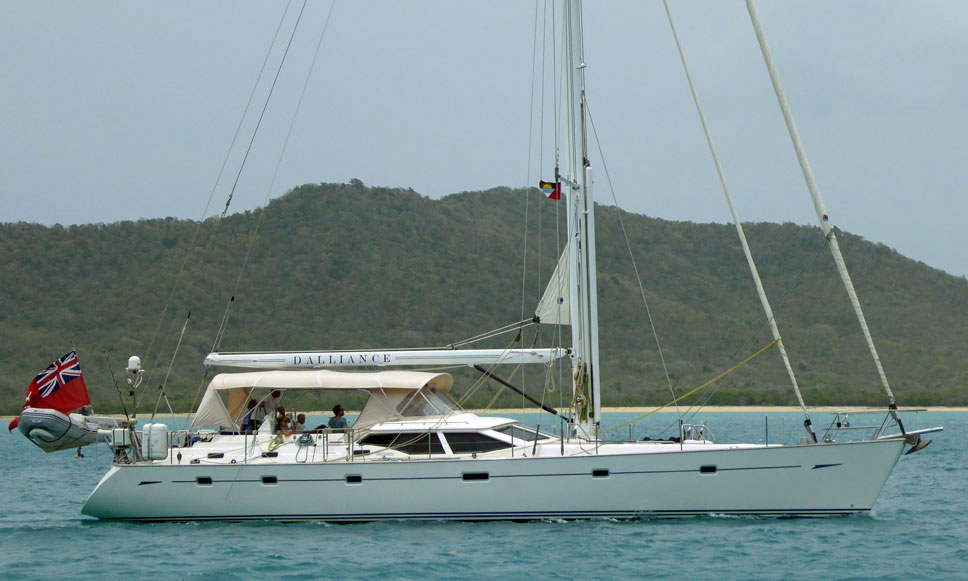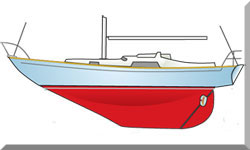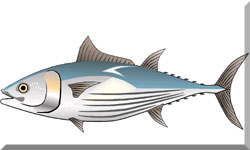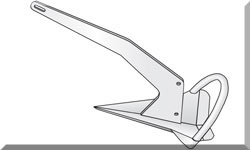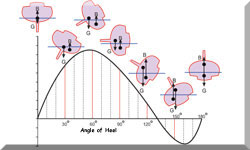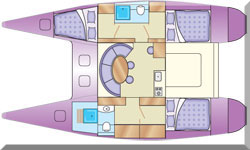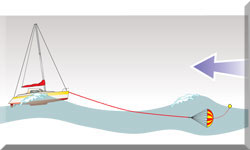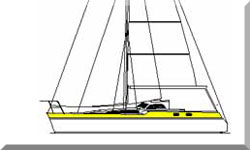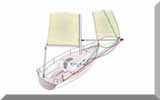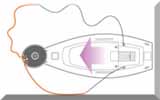- Home
- Cruiser Yachts under 30'
- Hurley 22
The Hurley 22 Sailboat
Specs & Key Performance Indicators
The Hurley 22 sailboat was designed by Ian Anderson and manufactured by Hurley Marine Ltd. in the United Kingdom throughout the years 1966 to 1975.
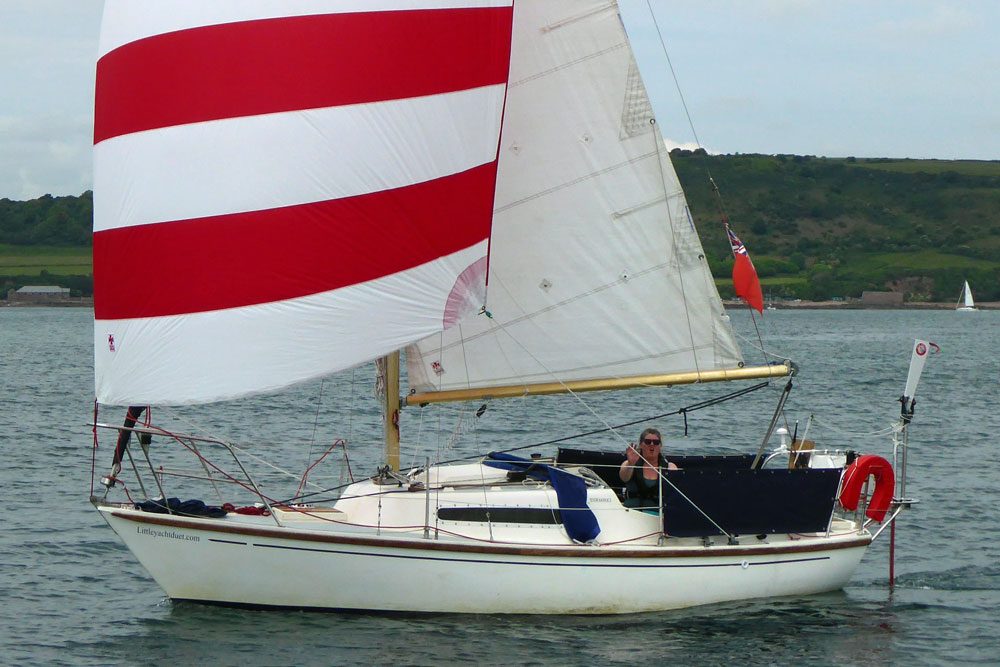 Very popular with adventurous singlehanded sailors, the Hurley 22 sloop has crossed oceans and survived serious storms.
Very popular with adventurous singlehanded sailors, the Hurley 22 sloop has crossed oceans and survived serious storms.Published Specification for the Hurley 22
- Keel & Rudder Configuration: Fin with spade rudder
- Hull Material: GRP (fibreglass)
- Length Overall*: 22'0" / 6.71m
- Waterline Length*: 17'0" / 5.18m
- Beam*: 7'5" / 2.26m
- Draft*: 3'9" / 1.14m (for fin keel version)
- Rig Type: Masthead Sloop
- Displacement*: 4,000lb / 1,814kg
- Ballast*: 2,300lb / 1,043kg
- Sail Area (main plus 100% foretriangle)*: 240ft² / 22.30m²
- Water Tank Capacity: No water tank fitted as standard, but space for jerry cans/bottles.
- Fuel Tank Capacity: Not specified as standard, often an outboard in a well.
- Hull Speed: 5.52 knots
- Designer: Ian Anderson
- Builder: Hurley Marine Ltd (UK)
- Year First Built: 1966
- Year Last Built: 1975
- Number Built: 1200
* Used to derive the design ratios referred to later in this article - here's how they're calculated...
Options & Alternatives
The Hurley 22 was primarily a masthead sloop. Buyers had options regarding draft, with both deep fin keel (3'9" / 1.14m) and shallow bilge keel (2'6" / 0.76m) versions available.
Interior layouts of the Hurley 22 saw a number of changes over the years, generally featuring a simple and functional design with a V-berth forward, a quarter berth to starboard, and a galley area to port. Early models lacked a separate head compartment, but later versions, like the Hurley 22R, attempted to incorporate one. Cabin headroom was approximately 1.4m (4'6").
Alternative versions of the Hurley 22 became available. The most notable was the bilge keel version, which allowed the boat to dry out on its twin keels, modifying the underwater hull shape while retaining the same hull and deck mouldings above the waterline.
Later versions of the Hurley 22 were produced after Hurley Marine Ltd. ceased operations in 1974. The boat was subsequently built by other manufacturers:
- South Coast Marine and Ravensail: Ravensail called their version the Hurley 22R. This version reportedly had a separate heads compartment.
- Hurlwind: A few boats were built by Hurlwind between 1988 and 1990.
- Holland Marine (Hurley 700): Some were also built under licence in Holland and known as the Hurley 700.
Essential differences primarily revolved around minor internal finish variations, mast lengths, and ballast material, as well as the attempts to introduce a separate head compartment in some later models like the 22R.
Sail Areas & Rig Dimensions
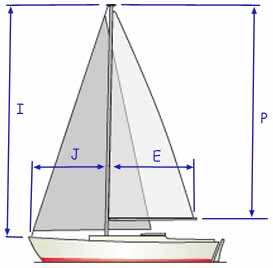 Sail Areas & Rig Dimensions
Sail Areas & Rig DimensionsSail Areas
- Mainsail: 118ft² / 10.97m²
- Working Jib: 122ft² / 11.35m²
- Total Working Area (Mainsail + Working Jib): 240ft² / 22.32m²
Rig Dimensions
- I (foretriangle height): Not known
- J (foretriangle base): Not known
- P (main luff): Not known
- E (main foot): Not known
Published Design Ratios
The Key Performance Indicators (KPIs)
The key design ratios for the Hurley 22 are:
- Sail Area/Displacement Ratio (SA/D): 15.3
- Ballast/Displacement Ratio: 57.6%
- Displacement/Length Ratio (D/L): 363
- Comfort Ratio: 23.1
- Capsize Screening Formula: 1.9
Theoretical Sailing Characteristics
Based on its design ratios, the Hurley 22 exhibits the following theoretical sailing characteristics:
Sail Area/Displacement Ratio (SA/D): 15.3
A SA/D ratio of 15.3 falls into the "under-powered" category (less than 16). This suggests the Hurley 22 will likely need a good, stiff breeze to achieve reasonable speeds under sail. In lighter wind conditions, its performance may be sluggish, making motor-sailing a more practical option.
Ballast/Displacement Ratio: 57.6%
A high ballast/displacement ratio of 57.6% (well over the typical 40% threshold for "stiffer" boats) indicates that the Hurley 22 carries a significant amount of ballast relative to its overall displacement. This translates to excellent initial stability and a powerful righting moment. In stronger winds, the boat should stand up well to its canvas, resisting excessive heel and allowing it to power through waves with good stability.
Displacement/Length Ratio (D/L): 363
A D/L ratio of 363 firmly places the Hurley 22 in the "ultraheavy" displacement category (over 350). This signifies a very robustly built boat for its length, known for its ability to carry significant loads without noticeable impact on performance. These boats tend to have a more comfortable motion in a seaway compared to lighter boats and are less sensitive to overloading. However, this comes at the cost of speed, as heavy displacement generally means lower hull speed and acceleration.
Comfort Ratio: 23.1
Ted Brewer's Comfort Ratio of 23.1 suggests that the Hurley 22 offers crew comfort similar to that of a coastal cruiser. While not indicating a particularly harsh motion, it also doesn't suggest an extremely smooth ride, which might be a consideration for those prone to seasickness, especially in rougher conditions.
Capsize Screening Formula: 1.9
A Capsize Screening Formula (CSF) of 1.9 is below the 2.0 threshold, generally suggesting the Hurley 22 would be a better choice for ocean passage-making than a boat with a higher CSF. This ratio indicates a boat's initial stability and its theoretical resistance to capsize in very rough conditions, with lower numbers being more favourable for offshore work.
In summary, the theoretical sailing characteristics of the Hurley 22 suggest it is a heavily built, very stable, and seaworthy coastal cruiser capable of handling challenging conditions. Its high ballast ratio and heavy displacement contribute to its stiffness and comfortable motion in a seaway, making it a robust and forgiving platform. However, its low sail area-to-displacement ratio indicates it will not be a fast boat, particularly in light airs, and is best suited for those prioritising stability and load-carrying capacity over blistering performance.
But the Design Ratios are Not the Whole Story...
While design ratios offer a valuable quantitative framework for comparing and understanding a sailboat's general characteristics, they have several limitations:
Simplification of Complex Hydrodynamics: Design ratios are simplified mathematical formulas that attempt to capture the complex interplay of forces on a sailboat. They don't account for the intricate nuances of hull shape, keel and rudder foil sections, or the specific design of the rig and sails (e.g., aspect ratio, twist, camber). Two boats with similar ratios might sail quite differently due to these subtle design variations.
Static vs. Dynamic Performance: Ratios are typically calculated for a static, upright boat (or at a standard displacement). They don't fully capture a boat's dynamic performance in various conditions, such as how it accelerates, points to windward, handles waves, or performs off the wind. For instance, a boat with a low D/L might be "lively" in a chop, while a high D/L boat might be "slower" but more comfortable.
Definition of "Standard" Displacement and Sail Area: The accuracy of ratios depends on consistent definitions of "standard displacement" and "sail area." Builders sometimes publish "light-ship" weights or include overlapping genoas to inflate SA/D ratios, making a boat appear more performance-oriented than it truly is. The "half-load" displacement (boat equipped for sailing with crew and half consumables) is generally preferred for comparison, but isn't always available. Similarly, the reported sail area often only considers the main and 100% foretriangle, not accounting for larger genoas or spinnakers that might significantly impact performance.
Ballast Placement vs. Ratio: The Ballast/Displacement Ratio indicates the percentage of total weight dedicated to ballast. However, it doesn't account for the placement of that ballast. Ballast low down in a deep fin keel provides significantly more righting moment than the same weight of internal ballast. Therefore, a boat with a lower ballast ratio but deeper keel might be stiffer than one with a higher ratio but shallower, internally ballasted keel.
Subjectivity of "Comfort": The Comfort Ratio, while useful, is a broad generalisation. What one person considers "comfortable" in a seaway, another might find unsettling. Factors like motion sickness susceptibility and individual preferences play a significant role.
Rig Design and Efficiency: While the SA/D ratio gives a general idea of power, it doesn't account for the efficiency of the rig. A modern, high-aspect ratio rig with efficient sails can generate more drive for a given sail area than an older, lower-aspect rig. The I, J, P, E dimensions, which define the proportions of the sail plan, are important for understanding rig efficiency but are not directly incorporated into the basic SA/D ratio.
Hull Shape Beyond Length and Beam: D/L and beam figures don't describe the entire hull form, such as entry angle, fullness of sections, or rocker. These elements significantly affect wave-making resistance, seakeeping, and handling.
Intended Use and Target Market: Ratios are most useful when comparing boats designed for similar purposes. Comparing a pure racing dinghy's ratios to a heavy displacement cruiser's might be misleading without understanding their respective design goals.
Crew Input and Skill: A boat's actual sailing characteristics are also heavily influenced by the skill and experience of its crew. How sails are trimmed, how the boat is steered, and how weight is distributed all contribute to real-world performance, something ratios cannot capture.
In conclusion, design ratios provide a helpful starting point for understanding a sailboat's theoretical performance and general character. They can quickly categorise a boat (e.g., heavy cruiser, light racer). However, they should always be considered alongside more detailed design information, anecdotal evidence from owners, and ideally, an on-water assessment, to form a complete picture of a boat's sailing characteristics. They are a tool for comparison, not a definitive predictor of every aspect of a boat's behaviour.
More Specs & Key Performance Indicators for Popular Cruising Boats
Recent Articles
-
Modern Boat Electronics and the Latest Marine Instruments
Dec 20, 25 05:27 PM
Should sailboat instruments be linked to the latest boat electronics as a fully integrated system, or is it best to leave them as independent units? -
Hans Christian 43: Classic Bluewater Cruiser & Liveaboard Sailboat
Dec 10, 25 04:37 AM
Explore the Hans Christian 43: a legendary heavy-displacement, long-keel sailboat. Read our in-depth review of its specs, design ratios, and suitability for offshore cruising and living aboard. -
Planning Your Sailboat Liveaboard Lifestyle: An Ocean Sailor's Guide
Dec 06, 25 05:18 AM
Seasoned sailors share their methodical risk analysis for planning a secure Sailboat Liveaboard Lifestyle, covering financial, property, and relationship risks.

